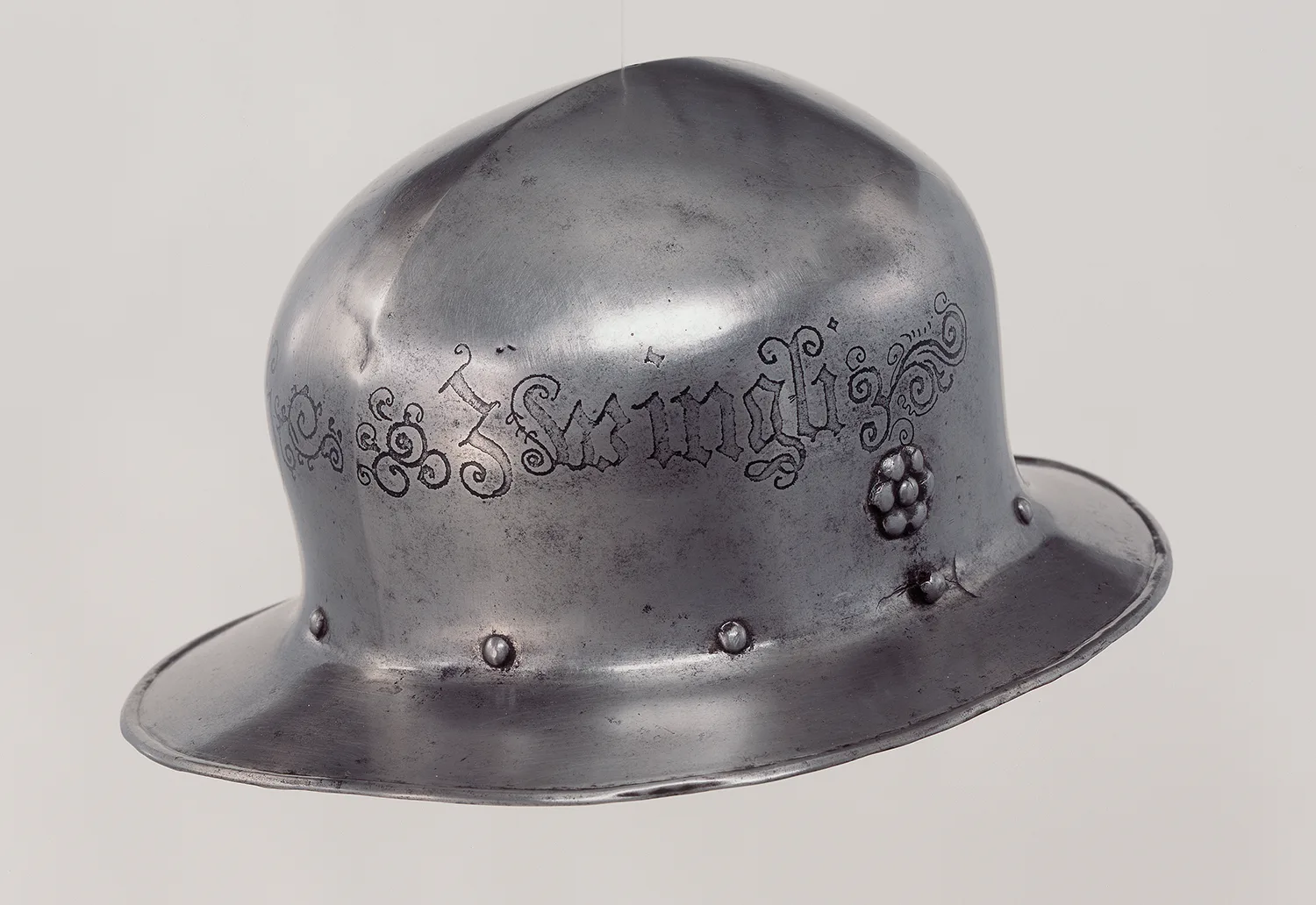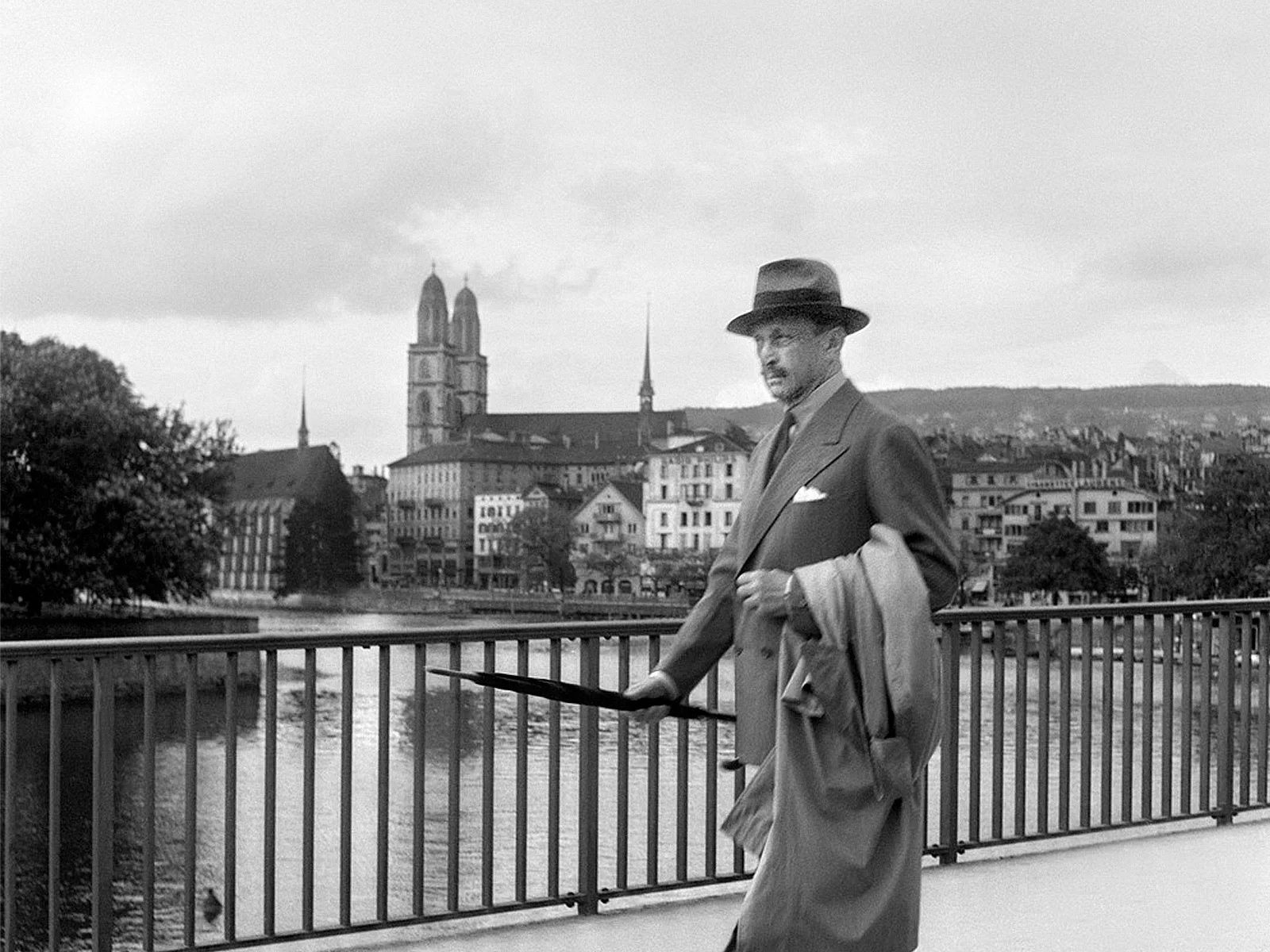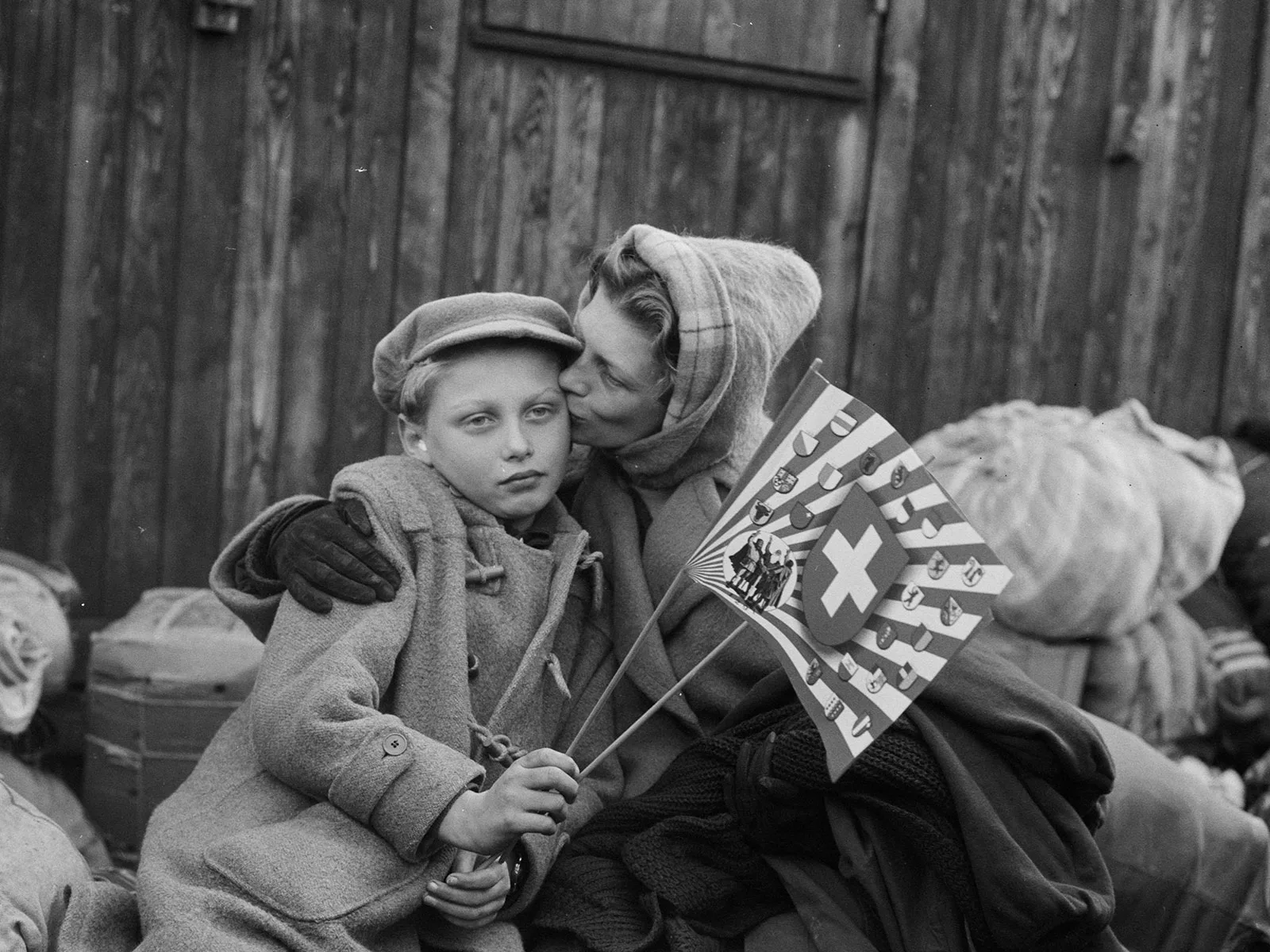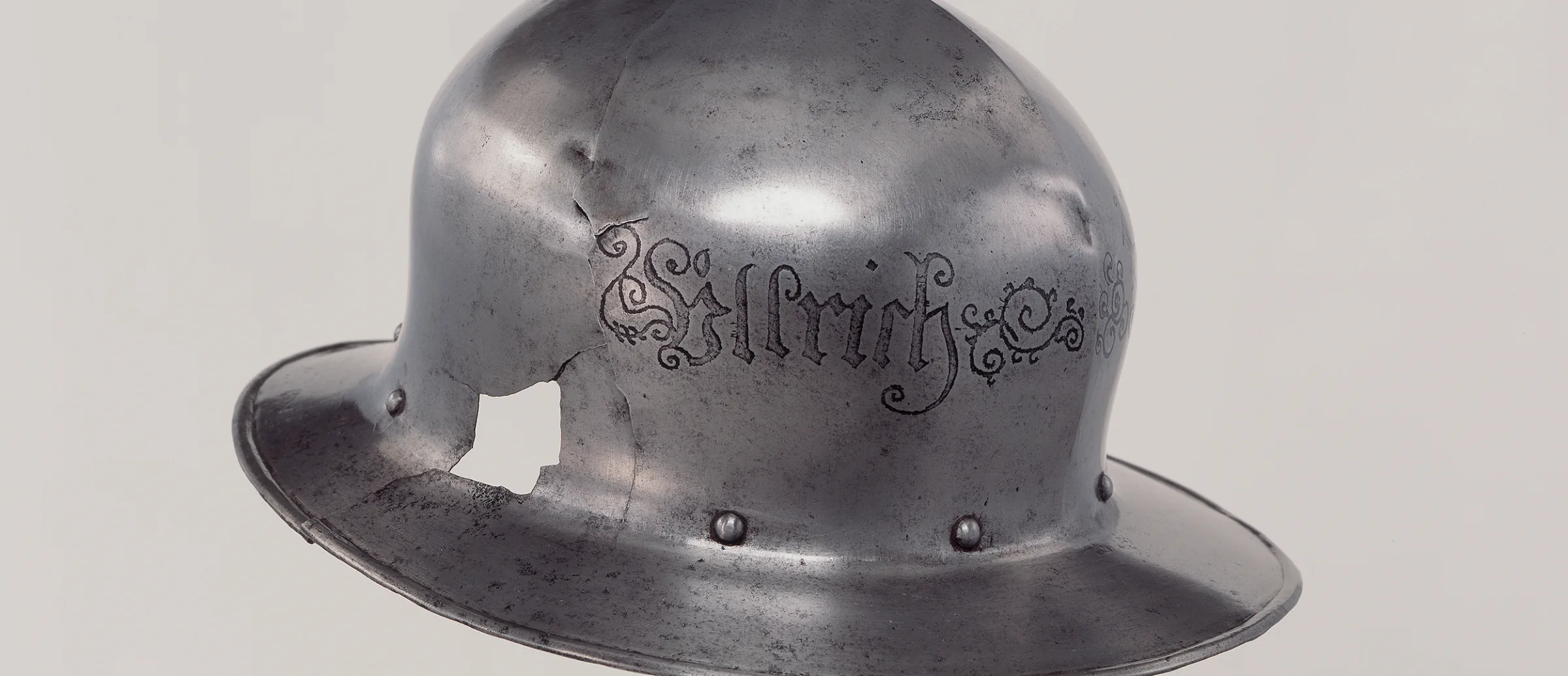
Material and magic – “Zwingli’s helmet” on a journey through time
The iron helmet in the collection at the Swiss National Museum is said to have once protected the head of Ulrich Zwingli (1484–1531) as he lay dying. Though there is no evidence of the actual origin of this Catholic trophy.
Numbers enjoy a high degree of credibility, and we celebrate the birthdays of people, events and objects. But what birthday, what numbers can we put forward as a checkpoint in the wisdom passed on and might point to the authenticity of an iron helmet that has gone down in history as “Zwingli’s helmet”?
The design of the iron hat dates back around 500 years. A material analysis could determine this more precisely. But what we most want to know is whether the helmet ever actually belonged to Zurich reformer Huldrich Zwingli (1484–1531). Unfortunately, evidence is lacking. No contemporary sources exist. The oldest surviving source, which ascribes the helmet to Zwingli, dates back to 74 years after his death. Given this time gap, all other references to “Zwingli’s helmet” lose evidential value.
In 1605, the Lucerne armoury registered this helmet as “Zwingli’s iron hat”. It was subsequently heralded as a trophy of the Catholics. It was said that in the Battle of Kappel in 1531, the Catholics of Central Switzerland removed the helmet from the defeated Zurich reformer.
In 1805, a copperplate engraving in a Zurich New Year Journal depicted “Zwingli’s weapons” – sword, Swiss sabre and battle axe – with this helmet. The people of Zurich, too, were now convinced of its “authenticity” and claimed it as the estate of their reformer. In fact, they seized the weapons and the helmet in the Sonderbund War. In 1849, “Zwingli’s weapons” were presented to the Zurich government at a military/political ceremony and transported to the city’s armoury in a kind of procession. In 1898, the ensemble of sword, battle axe and helmet found their way into the new Swiss National Museum’s collection.
With every rite of passage that the iron hat has gone through in its public life, it has repeatedly been baptised as “Zwingli’s helmet”. The presentation to the Zurich armoury and then to the National Museum elevated it to the status of a contact relic. It lies untouchable behind glass as an object personally touched by the reformer, while ascriptions lend it grandeur. Despite the absence of certainty, historians and curators repeatedly suggest that the helmet did indeed grace the reformer’s head over 500 years ago, and moreover that it was seized by Zwingli’s opponents after his violent death during the battle. Who knows, perhaps that did happen. The history of the helmet provides no direct evidence to support this, but also no meaningful evidence to contradict it. The helmet has only been revealing its history since the early 17th century.

Hans Asper (1499–1571), posthumous panel painting of Ulrich Zwingli, 1549. Oil and tempera on wood. Deposit: Zurich Central Library
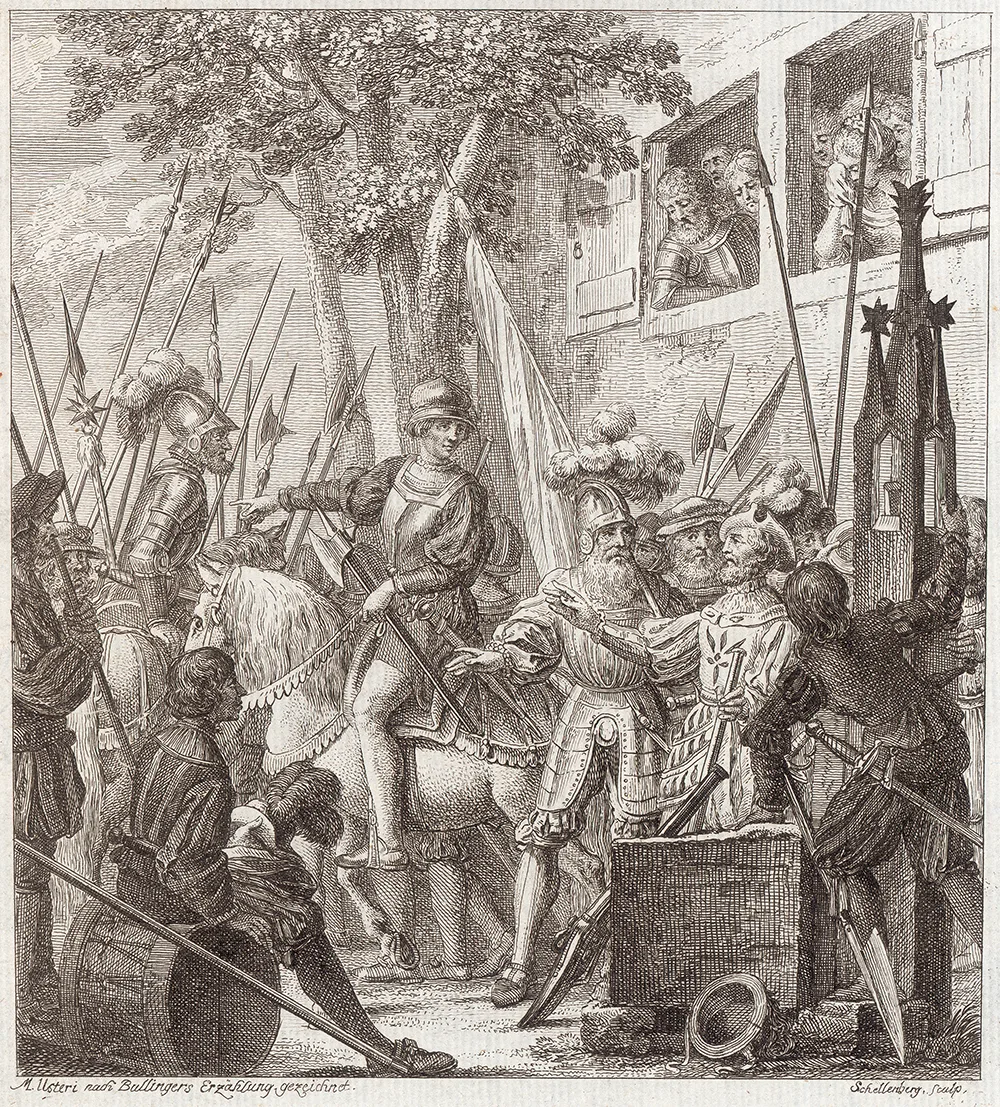
This print by Johann Martin Usteri (1763–1827) and Johann Rudolf Schellenberg (1740–1806) shows Zwingli on horseback surrounded by warriors as he leaves to fight in the Battle of Kappel in 1531. Image: Swiss National Museum
The iron hat alleged to belong to Ulrich Zwingli. Zwingli’s name is engraved on the side. The engraving is clearly more recent than the helmet. The background to the hole in this helmet ascribed to Zwingli is a complete mystery. It may well have been made deliberately in the armoury to lend authenticity to the hat as a spoil of war. The helmet is on display in the National Museum Zurich. Photos: Swiss National Museum



